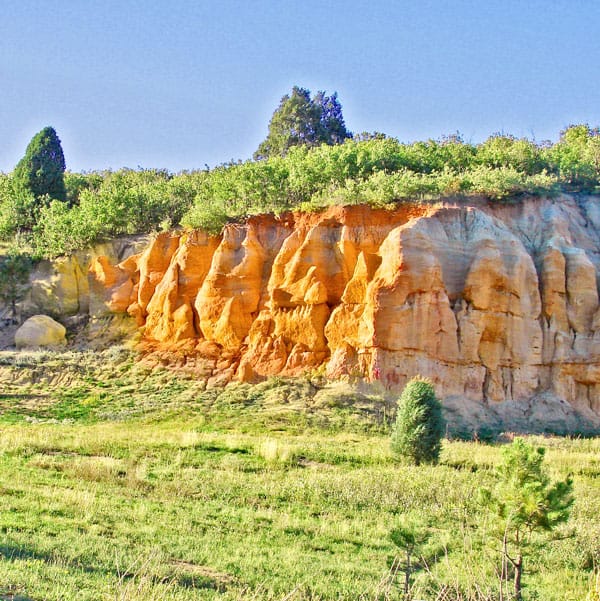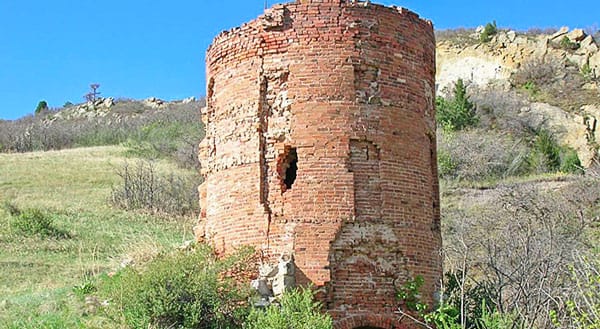Sticks and then bricks

By Joe Gschwendtner; photos courtesy of Kevin Grenier, Douglas County Historic Preservation

The Tomah Clay Pits in Larkspur, Colorado.

A Silicated Brick Company lime kiln still standing from the early 1900s.
In Douglas County’s early years, hillside lumber yielded logs which were the basic building blocks of construction. Whether log cabins or storefronts, wood carried the day. Rhyolite was used periodically, but for larger and commercial projects. It was also in limited supply, even with numerous local quarries operating. Clay for bricks was readily available in places like Tomah and the Johnson Pit on Castle Butte, and, for a brief era in the late 1800s, it was the “go-to” building material of the day.
Before our pioneers arrived, local Native American tribes were already using clay for pots for water storage, cooking vessels and food storage containers. It is not unreasonable to assume that their methods had more than a passing influence on the settlers who had to use local resources in building their cabins and cooking hearths.
The ready availability of Wildcat clay facilitated its use structurally. Locally, we have the story of the brick making Woodhouse family of Sedalia. Charles Woodhouse learned his trade in Sheffield, England. His brother James was both brick maker and ironworker, having last worked in the Sheffield Steel Works before emigrating in 1869. It was James, first a rancher and farmer, who later turned to brickmaking in a big way. In fact, it is said that virtually all pioneer brick homes in the Castle Rock area were made of “Woodhouse Brick.” Some would find its way as far as Alamosa and all the way to San Diego, California. Willis Walker was also a brick maker, but never in quantities comparable to the Woodhouse brothers.
Making bricks was cumbersome. One started with clay and mixed it into a uniformly damp mass. This was done using a pug mill, a vat churned by a horse walking in a circle. Once the proper consistency was reached, the clay was put into a handmade wooden mold lined with oil or sand to prevent sticking. Then, it was more finely shaped, dried, cured and finally baked. These bricks were called soft mud bricks.
In the early 1900s, a more advanced product was put into play. Called silicated brick, it consisted of compressed silica, sand and lime rock. Instead of baking the brick conventionally, the curing process came via the application of high-pressure steam.
In Douglas County, the Silicated Brick Company was founded in 1904, located on land next to the main gate of what is now Roxborough State Park. In its heyday, around 1909, it employed 27 men within the company grounds, allowing for some eight homes just west of the plant. Volume was such that the Colorado and Southern Railway extended a spur to the operation from its Denver line. Not surprisingly, the small community was name Silica. Despite being seen as a cutting–edge product of the day, the company eventually failed by 1916.
But, large scale industry was never really destined for the Wildcat Mountains anyway. But for farming and ranching, terrain and distance to markets ruled out most other entrepreneurial options. Ironically, it was the sticks (pine forests) again which sparked the rediscovery of the area as a serene, desirable residential setting.
Wildcat Lore
As it turns out, The Connection serves residents of the Wildcat Mountains, a name pioneers and historians gave to the high country paralleling I-25 from Highlands Ranch and Lone Tree south to Castle Rock. Since the first territorial road (Daniels Park Road) bisected our mountains, there was no shortage of colorful characters parading through what are now private properties on the ridges of Douglas County. We bring these grizzled and gutsy settlers alive again, vividly sharing their stories of grit and achievement in these Castle Pines.